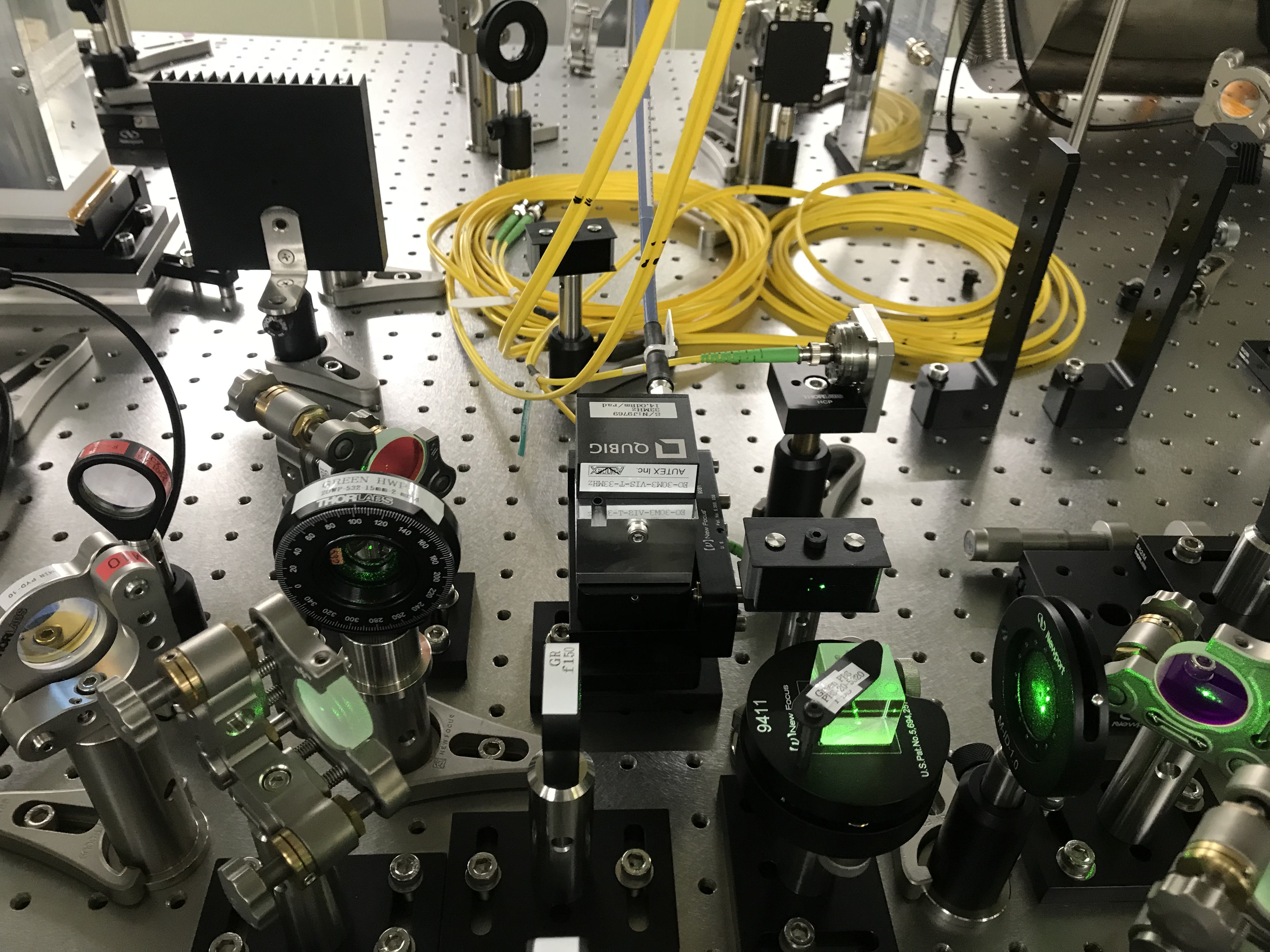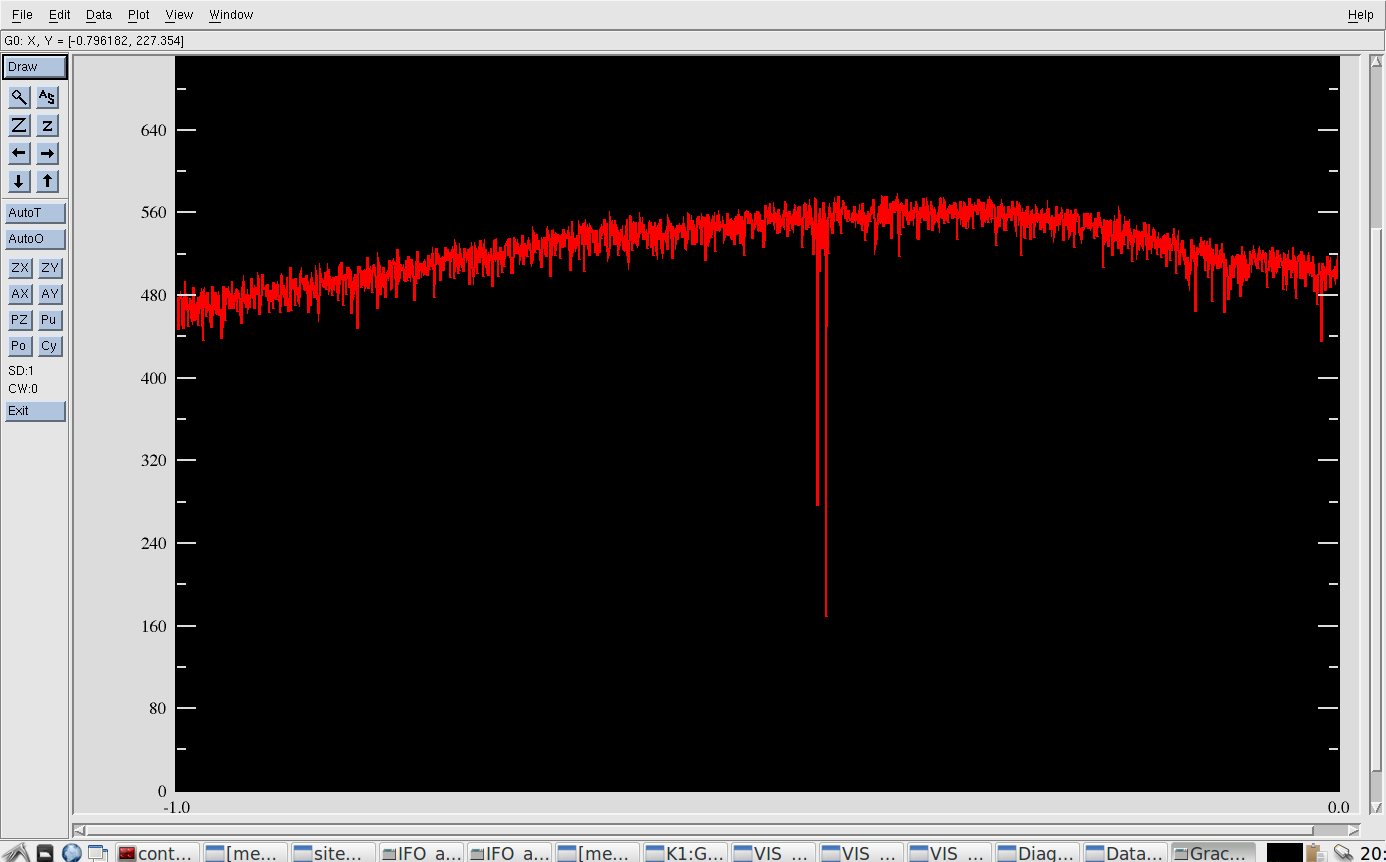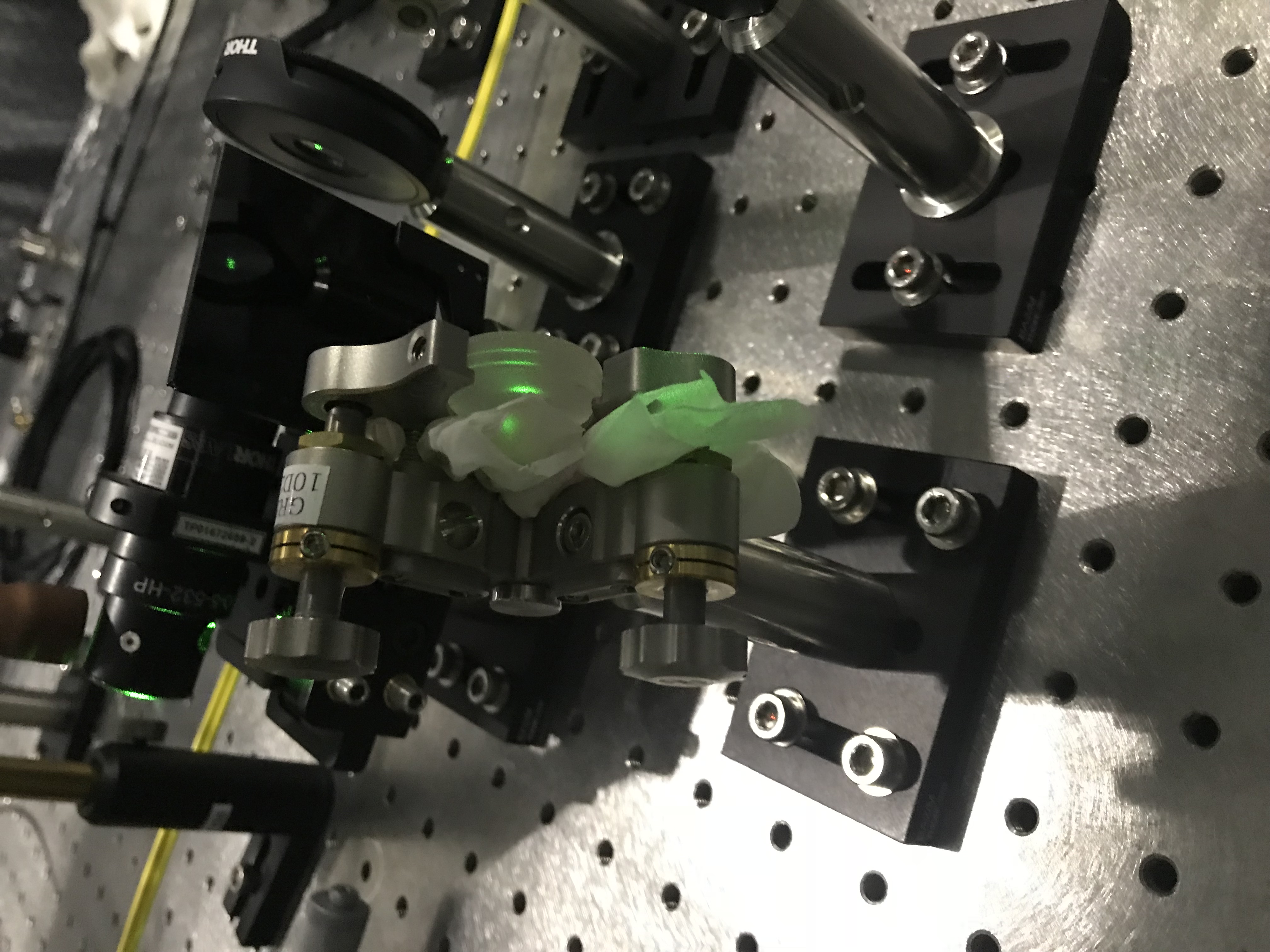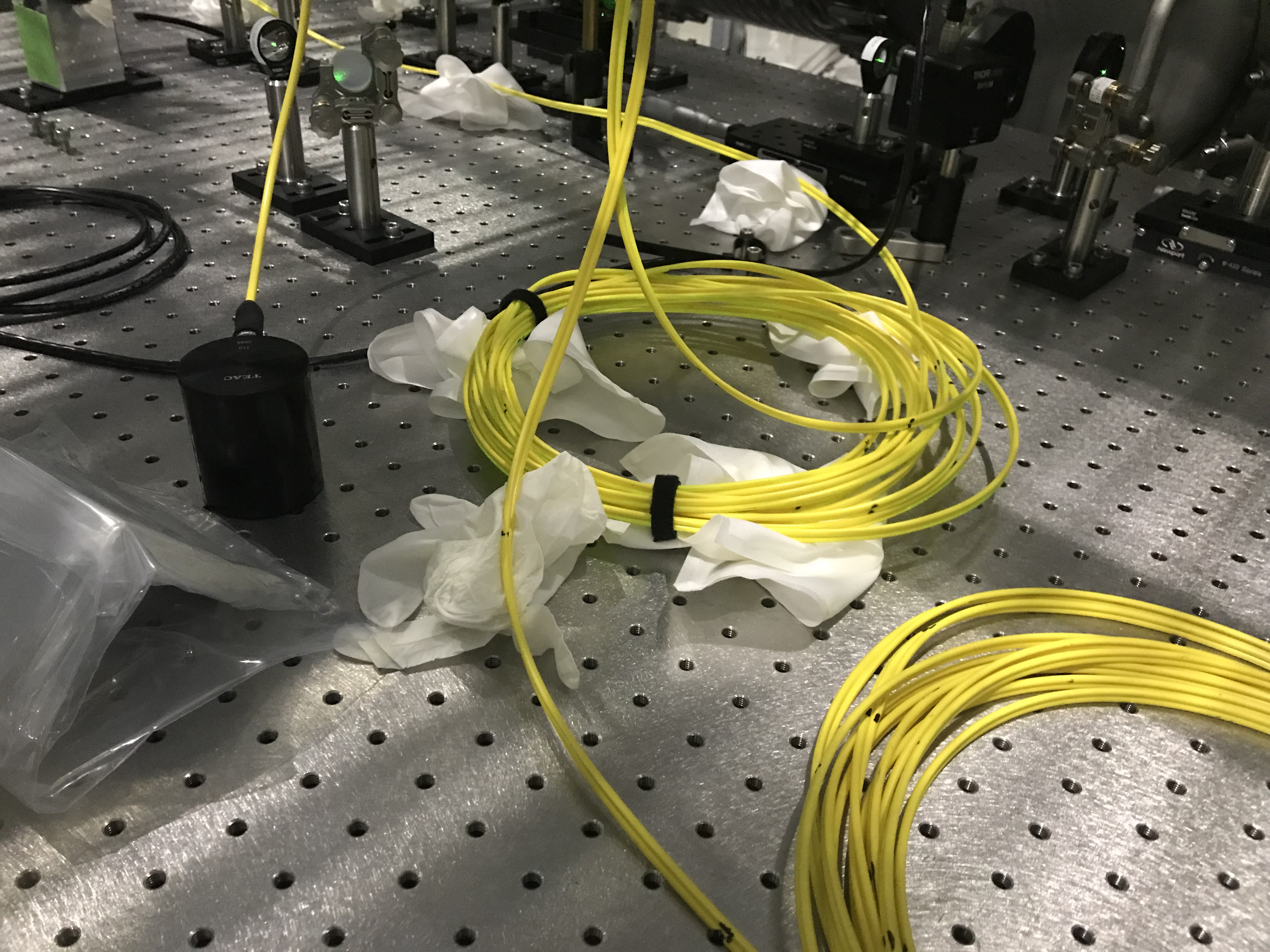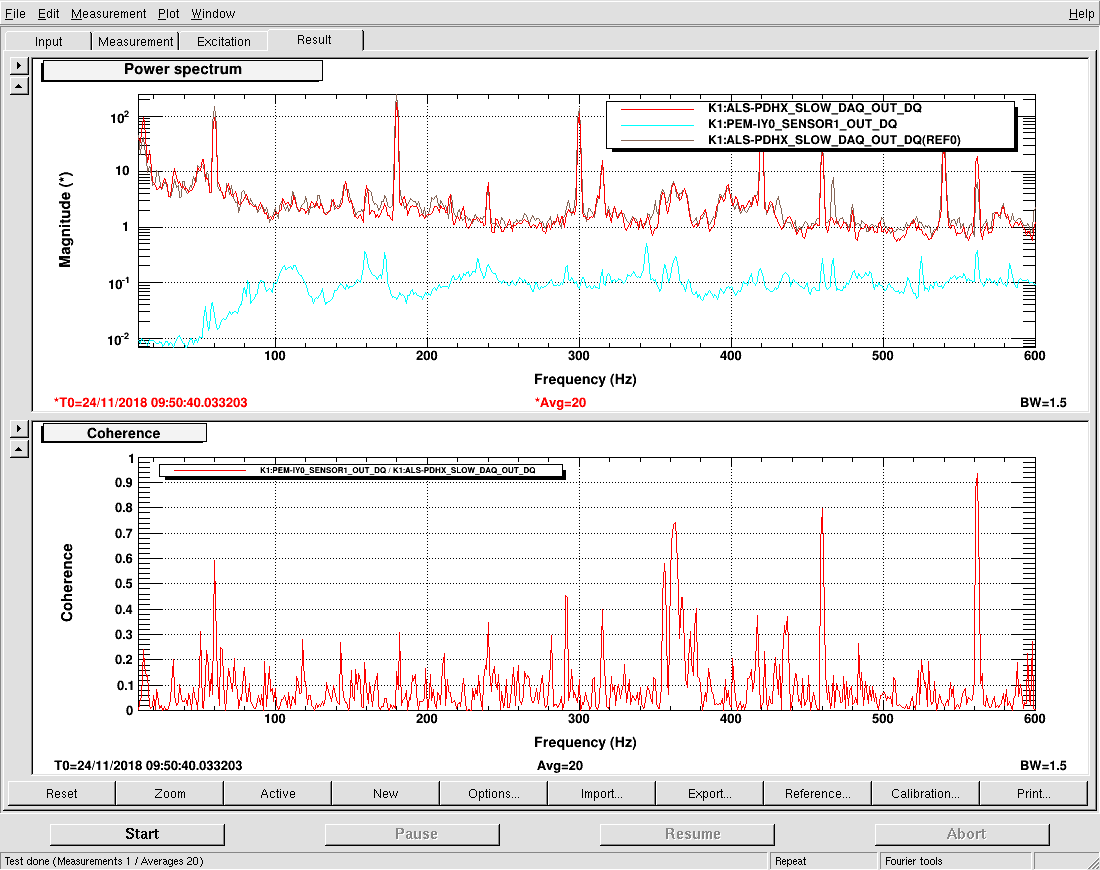[Yokogawa, Sugimoto, Enomoto]
We made efforts to find the sources of the noise that binds ALS as a frequency sensor for PSL (see 7071 and comments).
We tried the followings:
-- shake mirrors in ALS-related optics in PSL room.
-- shake the fiber that carries the green light to POP table.
-- took coherence between signal of an accelerometer put on some mirror holder and the control signal of PDHX.
-- shake POP table.
Most significant was the last one, shaking the POP table.
= Optics in PSL room =
Even though we put the accelerometer on the holders for some optics, including steering mirrors for beat signal of PLL, steering mirrors for green, iris for rejecting undesired beam from AOM, and the fiber coupler, we did not see significant coherence.
See the following plots, that show the coherences and spectra when the acceleromter was put on steering mirrors for IR beam from main path, IR beam from PROMETHEUS, and green beam, respectively. And the fiber coupler.
And here is our feeling when we shook the mirrors or the fiber.
Mirrors: if we hit the mirror holder a bit strongly, some peaks apeared around several hundred Hz in the control signal of PDHX, but the structure does not similar to that of the quiet-time control signal.
Fiber: if we shake the fiber so strongly that the motion of the fiber is well visible, stucture less noise floor goes up above the quiet-time controls signal, but obviously the motion of the fiber when we shook was more than hundred times larger than that in a quiet condition.
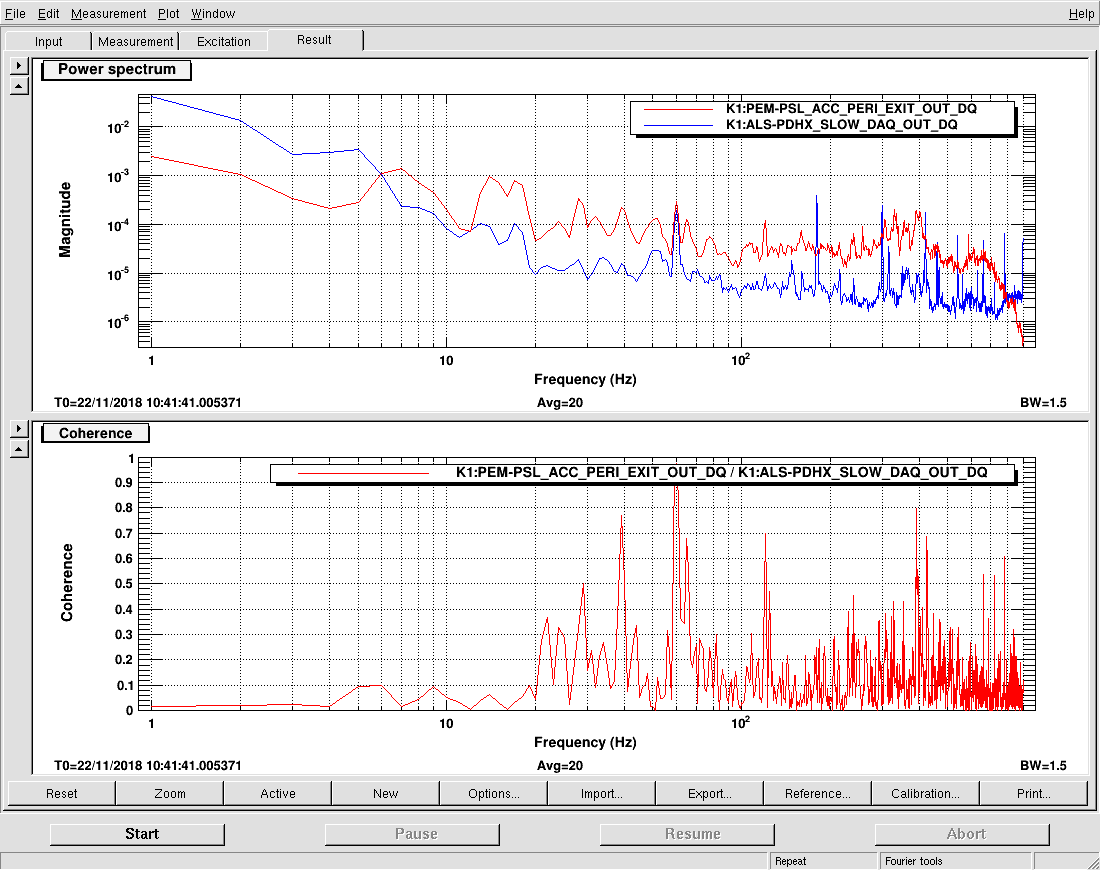
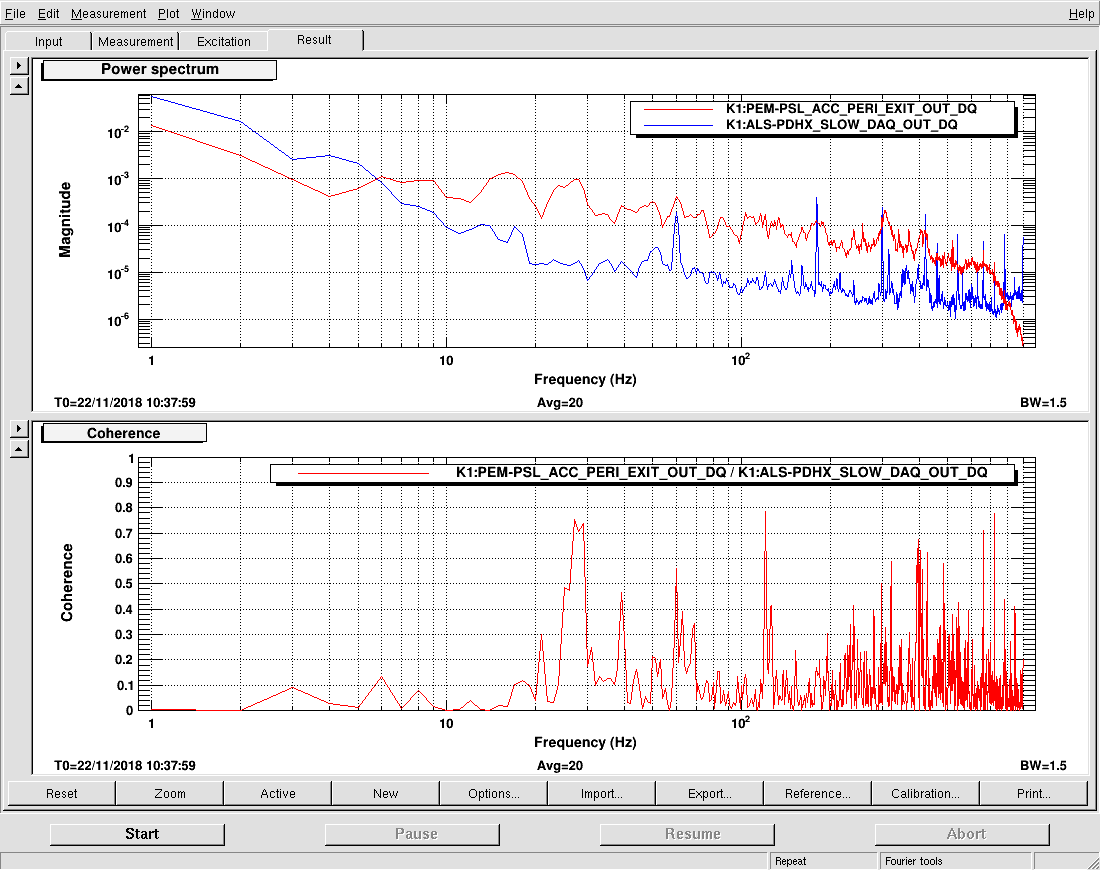

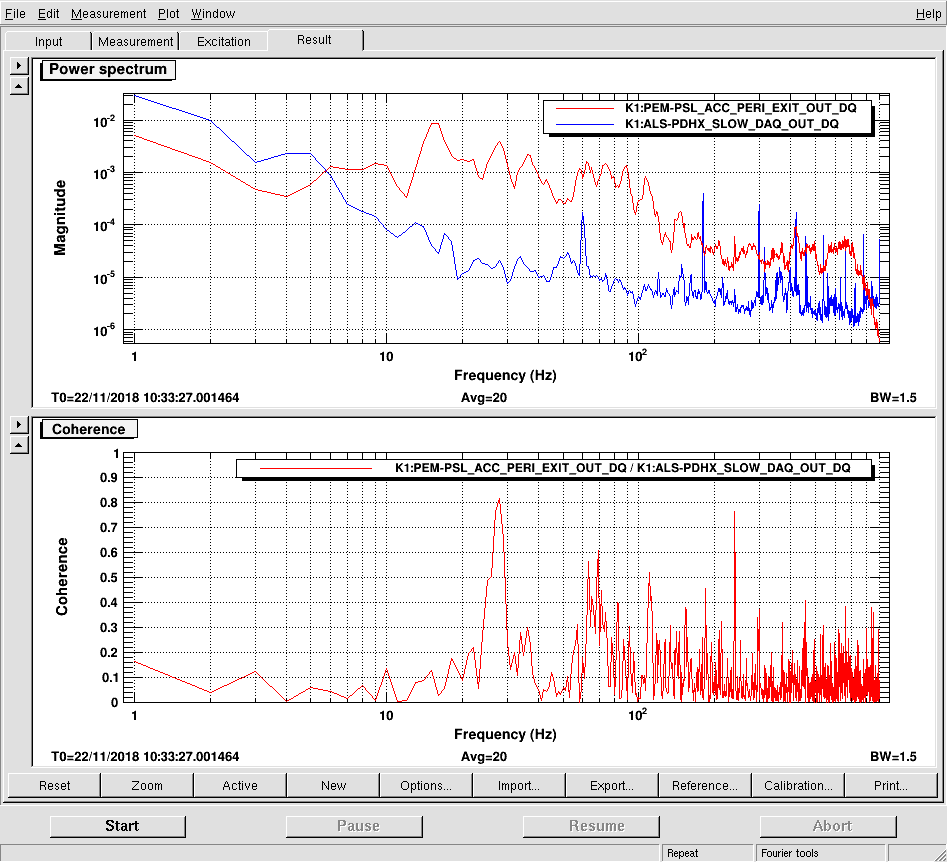
= POP table =
When we tap (or hit) the POP table on its side or back, we saw some structures in the control signal spectrum of PDHX grow.
This plot shows the spectrum when we hit the side of the table.
The peak at 33 Hz grew.
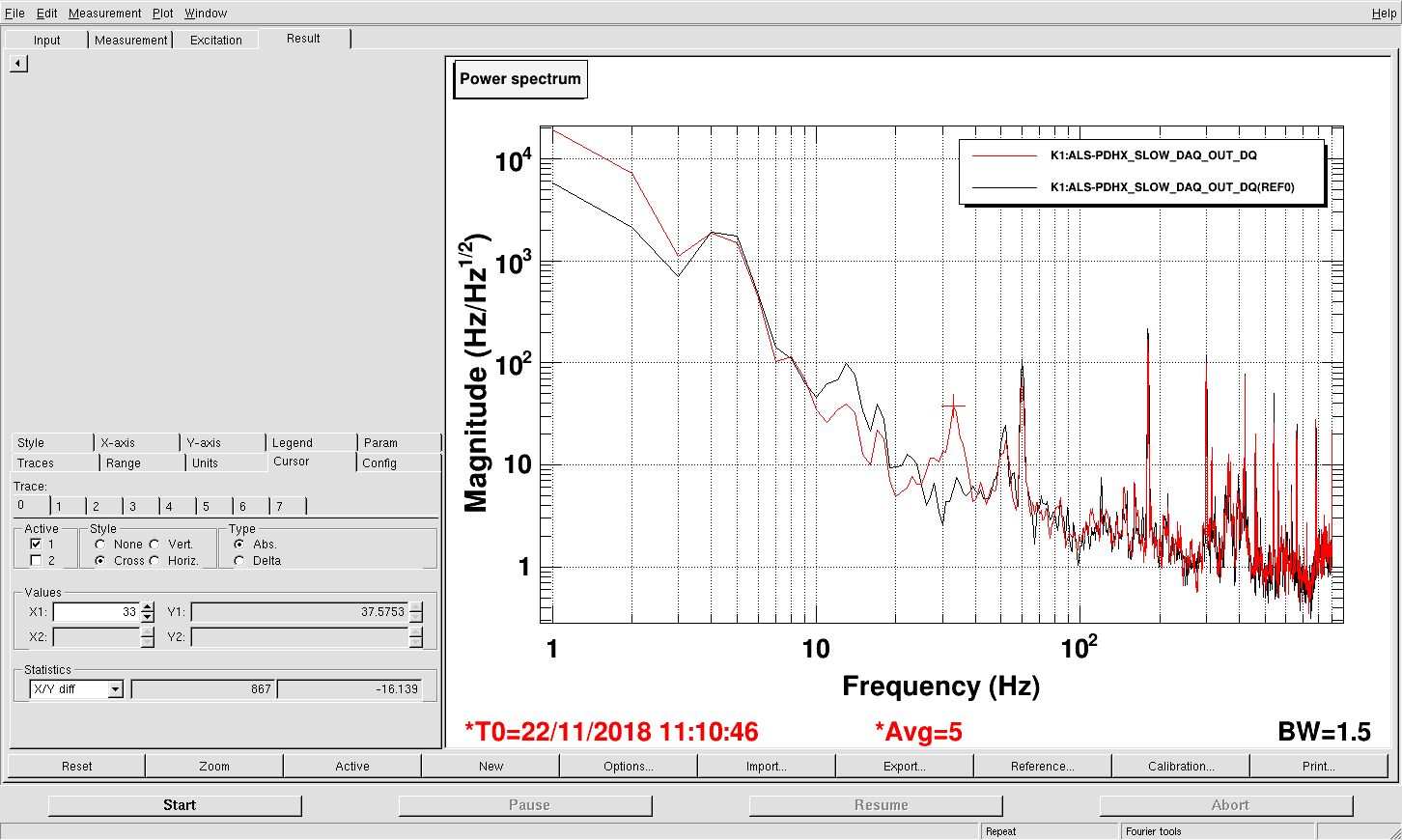
This plot shows the spectrum when we hit the back of the table, close to the edge (-X side) of the table.
Almost all the peaks around a few hundred Hz went up.
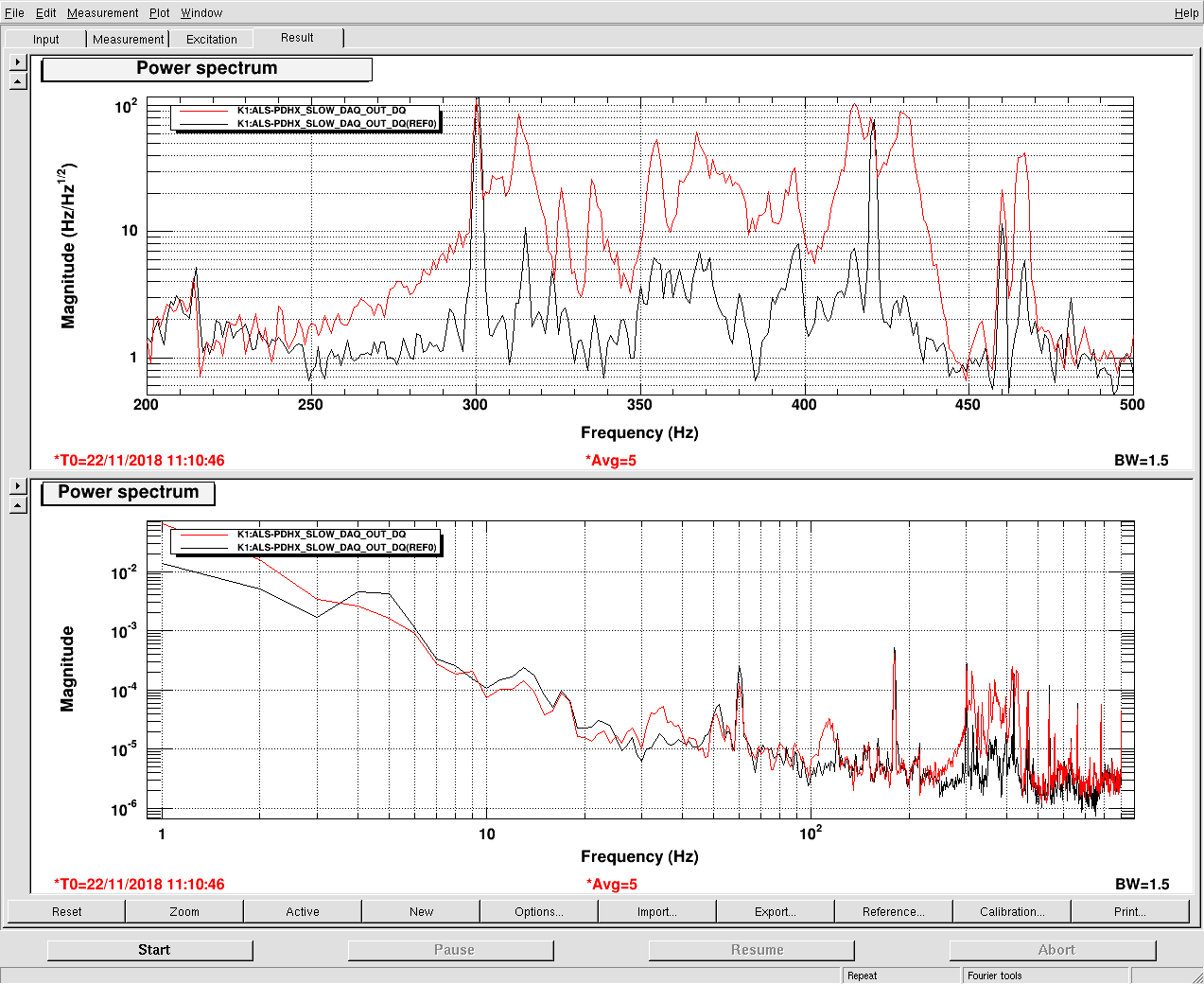
Last, this shows the spectrum when we hit the back of the table, center of the table.
The shape is different, but this also excited many peaks.
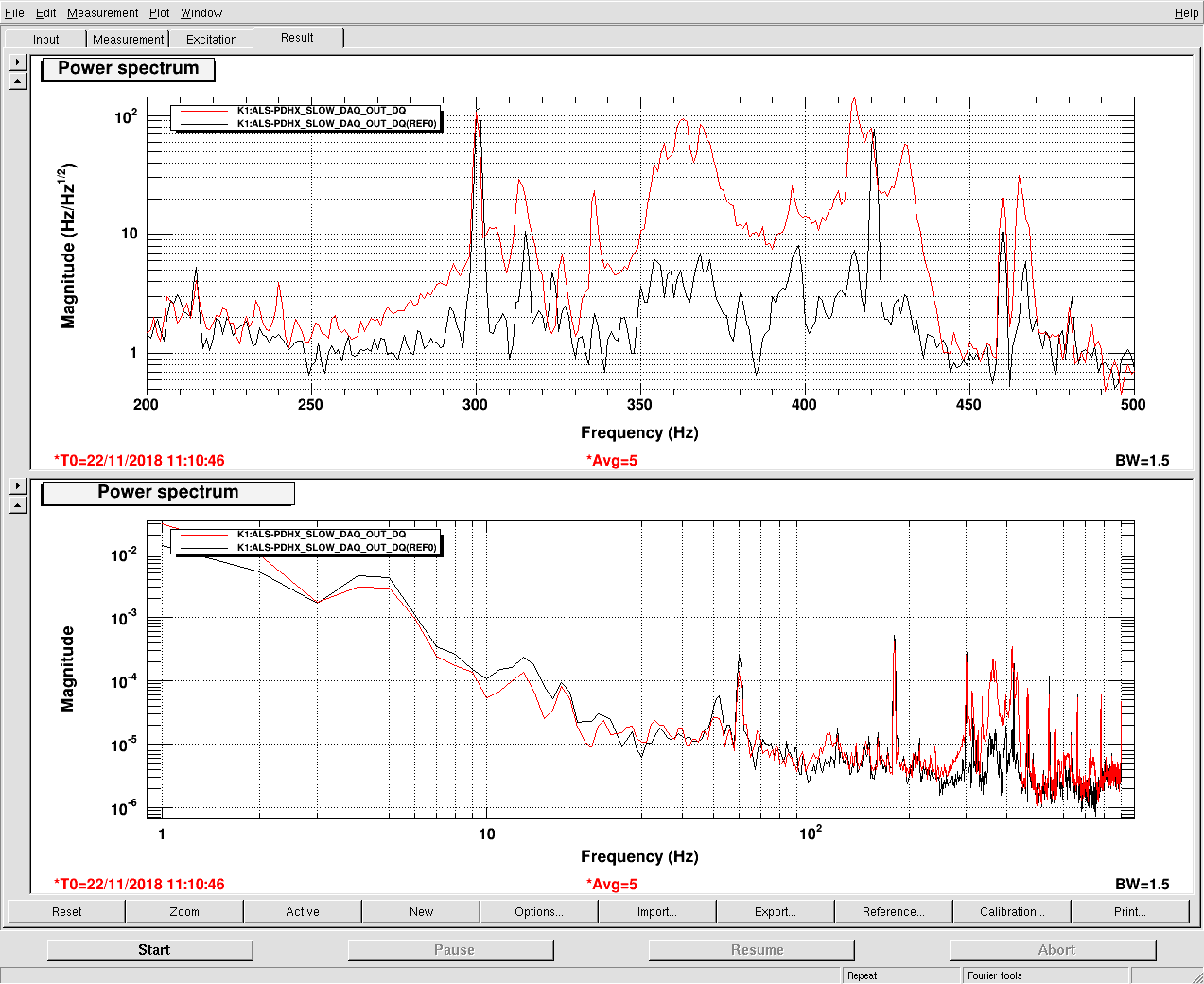
== Note ==
During this experiment, it seemed that we mistakenly misaligned the fiber coupler on PSL room or the beam to it. I will restore the alignment this weekend.
== Comments ==
Jitter coupling in X arm green PDH? scattering? If so, how can we deal with them? \(' o `)/







